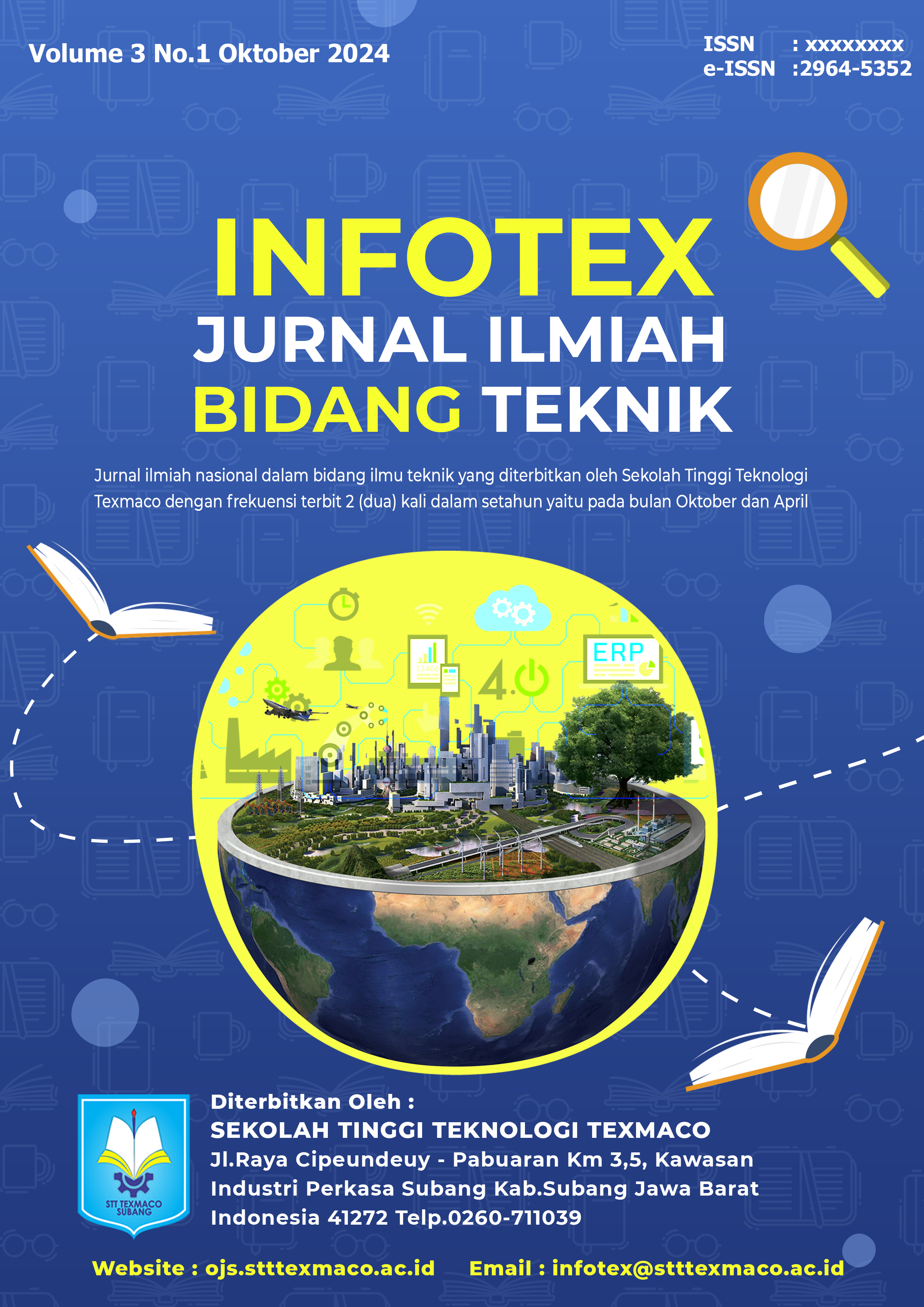Peningkatan Produktivitas Panel Surya Menggunakan Metode Dual Axis Solar Tracker Dan Mikrokontroler
Keywords:
Solar Panel, Dual Axis Solar Tracker, Arduino Uno, LDR Sensor, DC Motor, Renewable EnergyAbstract
This research aims to increase solar panel productivity using the Dual Axis Solar Tracker method. The system utilizes Arduino Uno, four LDR sensors, and two DC motors to move the solar panel. Testing was conducted over seven days in various weather conditions, comparing the performance of the Dual Axis system with a static system. Results show an average efficiency increase between 14.82% to 35.3%, with most results in the 15-19% range. The Dual Axis system consistently outperformed the static system in all tested weather conditions. Data analysis indicates that the dual axis system can maintain optimal performance in various atmospheric conditions. Implementation of this system can improve the efficiency of solar power plants, especially in areas with varied weather conditions. This research demonstrates the potential of the dual axis solar tracker system in substantially increasing solar panel efficiency.
References
[1] M. Syaiful Alim et al., “INFORMASI ARTIKEL ABSTRAK,” vol. 4, no. 3, pp. 2427–2435, doi: 10.55338/jpkmn.v4i2.1480.
[2] R. Hariyati et al., “Konsep Fotovoltaik Terintegrasi On Grid dengan Gedung STT-PLN,” Jurnal Ilmiah, vol. 11, no. 1, 2019.
[3] G. Rizky Kesatu and W. Priharti, “PENINGKATAN DAYA KELUARAN PANEL SURYA MENGGUNAKAN SISTEM PELACAK SURYA SUMBU GANDA SOLAR PANEL OUTPUT POWER IMPROVEMENT USING DUAL AXIS SOLAR TRACKER SYSTEM.”
[4] S. Yuwono, D. Diharto, and N. W. Pratama, “Manfaat Pengadaan Panel Surya dengan Menggunakan Metode On Grid,” ENERGI & KELISTRIKAN, vol. 13, no. 2, pp. 161–171, Dec. 2021, doi: 10.33322/energi.v13i2.1537.
[5] A. Bintoro, “ANALISA PENGARUH PERUBAHAN SUHU TERHADAP TEGANGAN PANEL SURYA JENIS MONO CHRYSTALLINE KAPASITAS DAYA 50 Wp”.
[6] M. : Peluang, D. Tantangan, P. Tinggi, H. Pranata, A. Soetedjo, and M. I. Ashari, “Seminar Nasional 2022 ITN Malang,” vol. 13, p. 2022.
[7] P. Harahap, N. Evalina, F. Irsan Pasaribu, B. Oktrialdi, and M. Alfansury Siregar, “Implementation of 3000-watt inverter as a source of electrical energy in solar power plants,” Disseminating Information on the Research of Mechanical Engineering-Jurnal Polimesin, vol. 21, no. 4, pp. 2023–2031, 2023, [Online]. Available: http://e-jurnal.pnl.ac.id/polimesin
[8] A. Anwari, L. Harisantoso, and S. S. Hotimah, “Optimalisasi Sistem Pendingin Konvesional Berbasis Mikrokontroler Arduino UNO R3,” 2024.
[9] K. S. Gaeid, M. N. Uddin, M. K. Mohamed, and O. N. Mohmmoud, “Design and Implement of Dual Axis Solar Tracker System Based Arduino,” Tikrit Journal of Engineering Sciences, vol. 27, no. 2, pp. 71–81, May 2020, doi: 10.25130/tjes.27.2.09.
[10] L. H. Santoso, A. Anwari, and R. Nurjanah, “Sistem Pengendalian Tanaman Hidroponik NFT (Nutrient Film Technique) Selada (Lactuca Sativa) Berbasis Iot Dan Pemanfaatan Sumber Energi Surya Sebagai Energi Cadangan (Studi Kasus Proyek P2L Di Desa Cilembu),” 2024.
Downloads
Published
Issue
Section
License
Copyright (c) 2024 Lilik Hari Santoso, Budi Sunarto, Desta Galan Maksum

This work is licensed under a Creative Commons Attribution-ShareAlike 4.0 International License.


